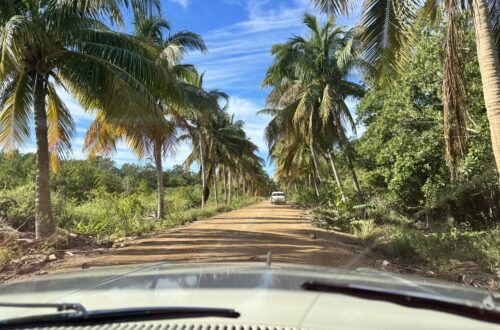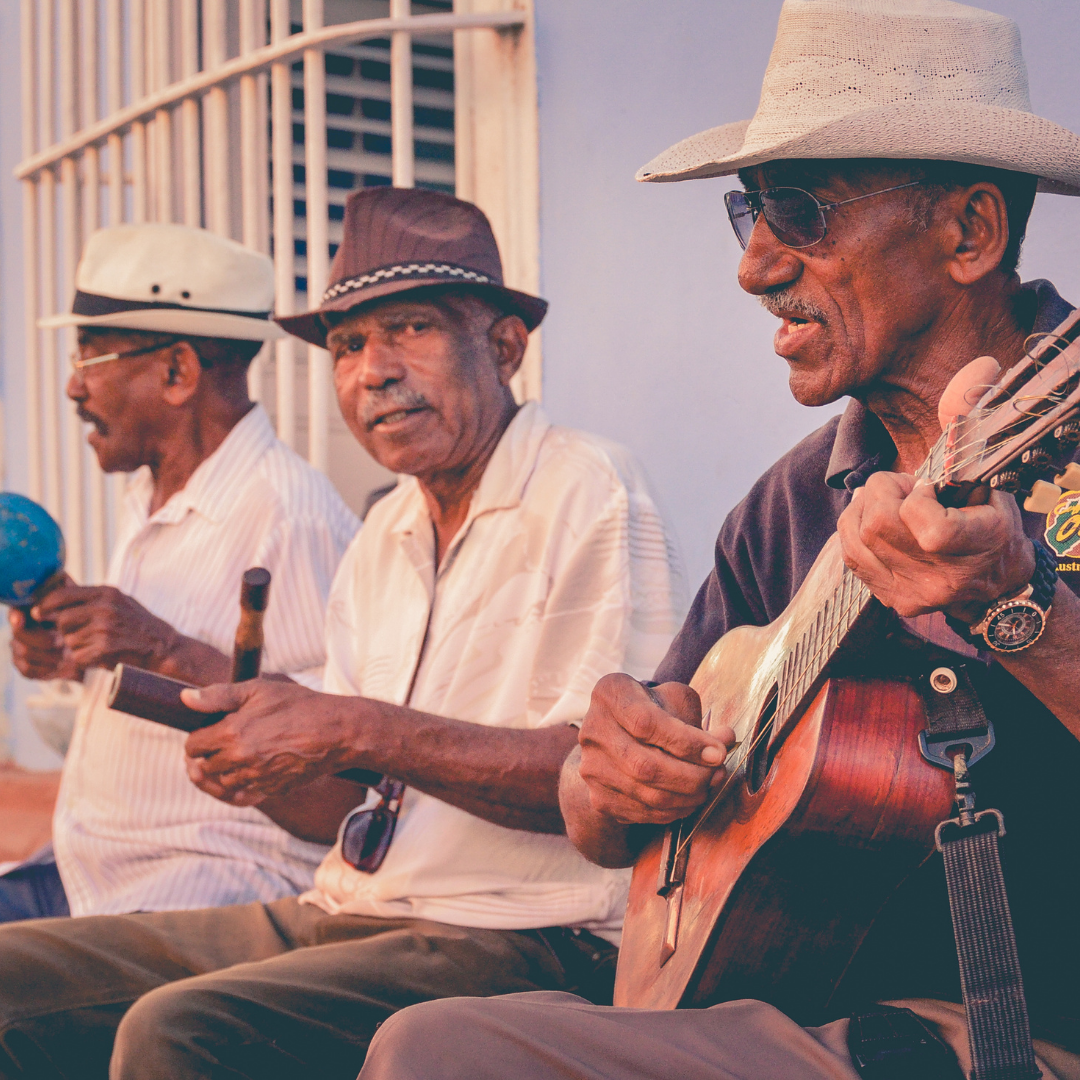
How To Travel Cuba On A Budget in 2024
Updated in October 2024
Let me get this off my chest: Cuba isn’t cheap. If you’re imagining an easy Caribbean island where a meal is just a few pesos and there are street vendors galore, you’re not in luck.
Lucky for you, I’ve been around the block and I know the ins and outs of the country. I know how to travel Cuba on a budget, and how to spend a pretty dime.
I’ve outlined everything you need to know about the cost of travel in Cuba, and some important factors you’ll need to watch out for.
Some posts on this site contain affiliate links, meaning if you book or buy something through one of these links, I may earn a small commission (at no extra cost to you).
Cash currency in Cuba
When was the last time that you lived off actual cash that you took straight from your pocket? Years ago, right? Now that we’re all so accustomed to paying contactless with our phones and having 24/7 access to online banking, it’s a bit of a shock when it’s taken away.
Well, if you’re travelling to Cuba it’s time to get back to basics. You’ll need to plan your cash allowance, budget your trip, and know what you will and won’t have access to when you’re on the island.
Don’t panic yet. I’m here to help.
Americans: you cannot access your credit cards or debit cards when you're in Cuba. You will need to take cash to cover your entire trip.
This means that you’ll have to plan your trip before you travel (or have someone do it for you) so that you’re not caught short when it’s your round to buy the mojitos.
Keep reading for everything you need to know about how to budget your Cuba travels.

If you’re not from the USA, I’d still 100% recommend to bring cash with you. I’m from the UK and although I can access my online banking (with a VPN) and take cash out of the ATM, I still wouldn’t risk it if I’m on a short trip.
Because anything can go wrong in Cuba and it’s not worth ruining your holiday over.
Plan your trip to Cuba in advance
Only a few years ago, Cuba didn’t have the luxury of internet. That meant that businesses like AirBnB and ViaHero weren’t a thing here yet, and there wasn’t a huge Instagram following either.
Lucky for you, things have progressed since then. It’s super easy to plan and pay for the majority of your Cuba trip before you travel.
Planning in advance will not only simplify your trip but it’ll mean you don’t have to carry around wads of cash.
My first trip was a stab in the dark: we bought the LonelyPlanet guide book and earmarked the places that looked nice, and hoped for the best. It was a fun adventure, and I was possibly one of the last to travel Cuba in this way, but it’s admittedly a lot more streamlined and accessible now. We wasted a lot of time, money and stress doing it the ‘raw’ way and nowadays I wouldn’t recommend it.
EXPENSES IN CUBA
Let’s get down to the nitty gritty. I’m going to break down the average costs of everything you’ll need to factor in to your Cuba budget. Buckle in.
Accommodation costs…
The following is based solely upon the idea that you’ll be staying in a casa particular. If you want to stay in a hotel, I can’t help you and you really should reconsider. See all about casa particulares here – there are many misconceptions that you’ll need to read up on.
… in Havana
Casa particular prices in Havana can vary depending on standard and location. I’d recommend searching AirBnB and Booking.com to get an idea.
Most first-timers to Cuba prefer to stay in the Havana Vieja district. The average cost of a good quality double room with ensuite here is from 50-150USD. If you’re after a private apartment, you can expect 100++ USD per night.
… in Viñales
Viñales is a lot more economical than Havana. But again, the price you pay will depend on location and quality.
For a standard double room you can pay as little as 20USD per night, spanning up to 85USD per night.
At the cheaper end of the spectrum, the 20-30USD rooms are standard, traditional, and will give you a real taste of authenticity with local hosts.
Most rooms in Viñales come with two double beds, so you can fit up to 4 people in. If you’re a family or a group of friends and don’t mind being a little cramped, this is a great budget option.
Most rooms also have a private bathroom, and often a private entrance (meaning you don’t have to go through the main house, which can feel uncomfortable for some).
When you start to pay 50USD and upwards, expect a much higher quality of accommodation. This could mean a beautiful cabaña with views of the valleys. It could mean a town house in the centre of Viñales with a four poster bed, better decor and decent better water pressure.
If you want my personal recommendations (I have many, for all budgets!) drop me a quick line here.
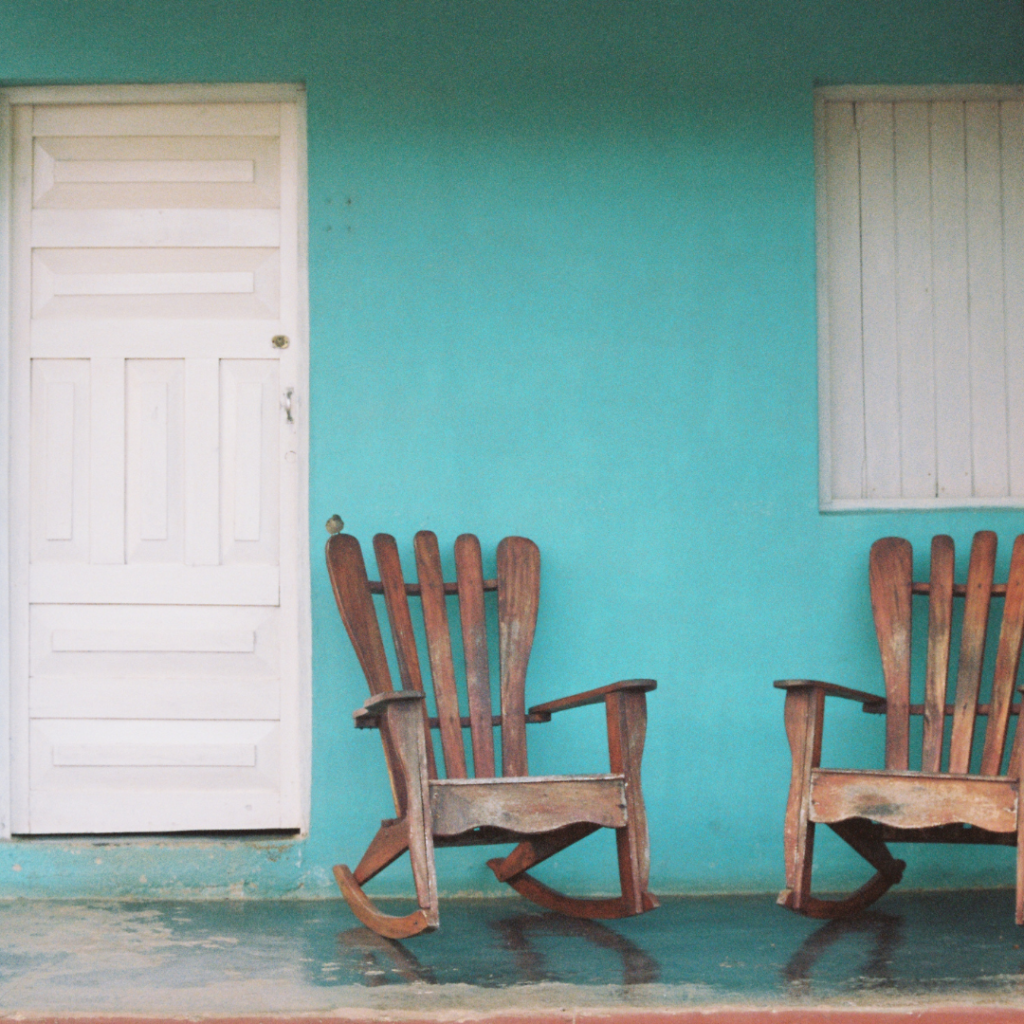
Food and Drink…
… in Havana
Like in most countries, the cost of food and drink in Cuba can vary hugely. If you want to dine in renowned restaurants in Havana and eat the very best food, you can’t easily do that ‘on a budget’.
I’d recommend to put some money aside – if possible – to eat at a couple of decent restaurants in the capital. If not only to not be one of those people who thinks “the food in Cuba is terrible” (because it really, really isn’t, if you know where to go).
I’ve visited a fair few restaurants in Havana during my years here, but I am in no way a professional on the matter. So it’s best you check out my friends article on the 35 Best Havana Restaurants and take your pick.
BUT if you’re not a ‘foodie’ and you plan to eat at local places, a lo cubano (as the Cuban’s do), you can budget as little as 5USD a day. Yes! A day!
Roaming the streets of Havana you will see street vendors selling snacks to keep you fueled. You’ll find agromercados (more commonly known as just ‘agros‘) which are covered or open street markets with locally grown fresh produce (just be careful of scams!). You’ll find little kiosks built back into people’s houses selling pizza for less than a dollar. And if you follow the locals you’ll find places to eat for less than 5USD.
… in Viñales
Food in Viñales is generally cheaper. You can dine out in a nice restaurant for less than 10USD per person. You can get cheap and strong mojitos opposite the main plaza for 1USD a pop.
I’d strongly recommend buying breakfast at your casa particular. The going rate is 5USD per person. Not only do you support your casa particular host, but also you get a huge amount of food. I’m talking fruits, pancakes, biscuits, eggs, sandwich with ham/cheese, bread and butter.
I used to fill up on the eggs and fresh fruit, and then pack the rest in a napkin and take it with me for the day. Then all you have to worry about is dinner.
Talking of dinner, I strongly recommend to also organise this in your casa particular. With a going rate of 10USD per person, the sheer quality AND quantity is unrivaled. If you go to a restaurant, you’ve got the costs of drinks/tips/side dishes to factor in. When you eat in your casa, you get rice/beans/salad/vegetables/meat/fish/soup/desert/filter water for 10USD.
If you’re really on a budget, organise to have ‘dinner’ in your casa mid afternoon. Trust me when I say you won’t need to eat again that day.
Real talk
There are places all around Cuba that serve food for Cubans. The average cost of a traditional meal will only set you back from 2 to 5USD (to be paid in CUP). But the tricky part is finding them. And honestly, even if you ask the locals where you can go to get food this cheap, they’ll most likely take you somewher that they can take a commission. E.g. your food will cost 10USD and they’ll take 5USD cut. It’s just how it works. If you’re happy with that, you’ll get a glimpse into local dining and get to support a local at the same time. 5USD is a lot of money for them.
If you’re looking for a stress-free trip, you should budget most of your food money for Havana. You aren’t going to want to be hunting the hectic streets looking for a cheap restaurant that is no good. It won’t make your stay enjoyable, and you can make up some of the money spent in Havana by visiting Viñales.
Now let’s factor in drinking water – most people will want to buy bottled water. A 50ml bottle will cost you 1USD. A litre bottle will cost you 1.5 – 3USD depending on location. This can add up quickly if you’re thirsty. Here’s are some options if you’re a budget traveller:
- find a 5l bit bottle of water in the stores (not always easy, depends on stock). Keep it in your room and decant as necessary. It’s much more economical.
- ask your accommodation host for access to their filter water. I drink it and I’m always fine. Cubans never drink water from the tap either – they all drink filtered water.
- take your own water filter bottle. I swear by this one.
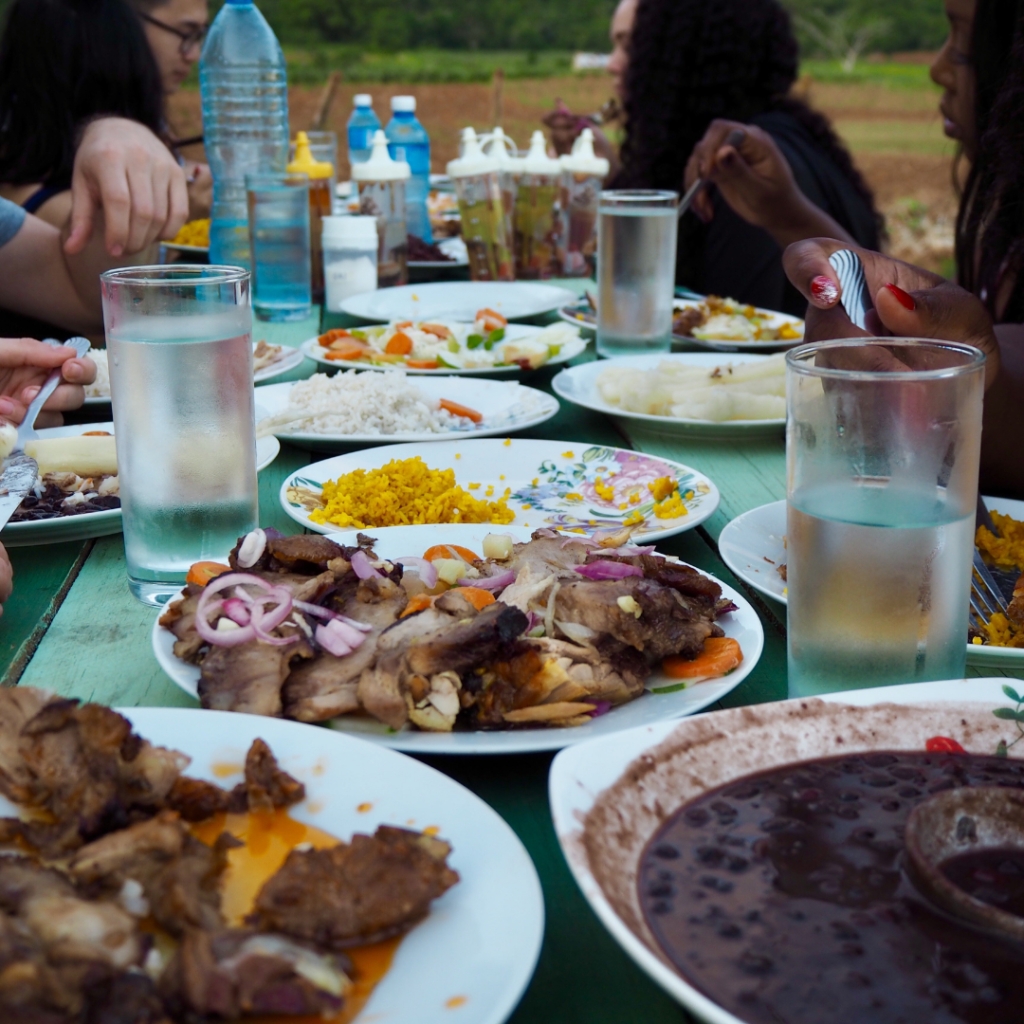
Transportation costs
As ever, this ranges hugely as well.
There are three main ways to travel in Cuba:
- private car/taxi
- taxi colectivo
- Viazul bus
Viazul bus is a favourite of budget travellers. They have a website and so you can book/pay in advance.
Taxi colectivo is a shared taxi. Usually your accommodation hosts can organise this for you to travel between towns. It’s cheaper because you share the journey with other people, until the car is full. A 3 hour journey from Havana to Viñales, for example, is around 20USD per person.
Private car – comfortable, easy, no-stress, reliable. But it costs more. If you’re a solo traveller this is not economical. If you’re in a group, it is worth doing. The 3 hour trip from Havana to Viñales is between 80-100USD per car.
Airport to Havana can be up to 40USD if you plan on hailing one there and then. Book with me and it’s 30USD set price (with an awesome driver and our own classic car if it’s available!)
Real talk
If you’re really on a budget, you’ll be wondering about local public transport. And honestly? It’s a bloody nightmare for locals, so imagine for tourists?
It just isn’t worth the hassle. You think it’ll be an ‘experience’, but it’s an experience not worth having. Sure, technically you can get around Havana for mere pesos. You can get from Havana to Viñales for 2USD. But the amount of hours that you’ll be stressing, getting lost, waiting for a bus to turn up that may never turn up? Not worth it.
My personal favourite method of transport is a private car. You have it organized before you travel, it’s reliable, you can stop as many times as you want, and what’s cooler than travelling around Cuba in a private classic car?
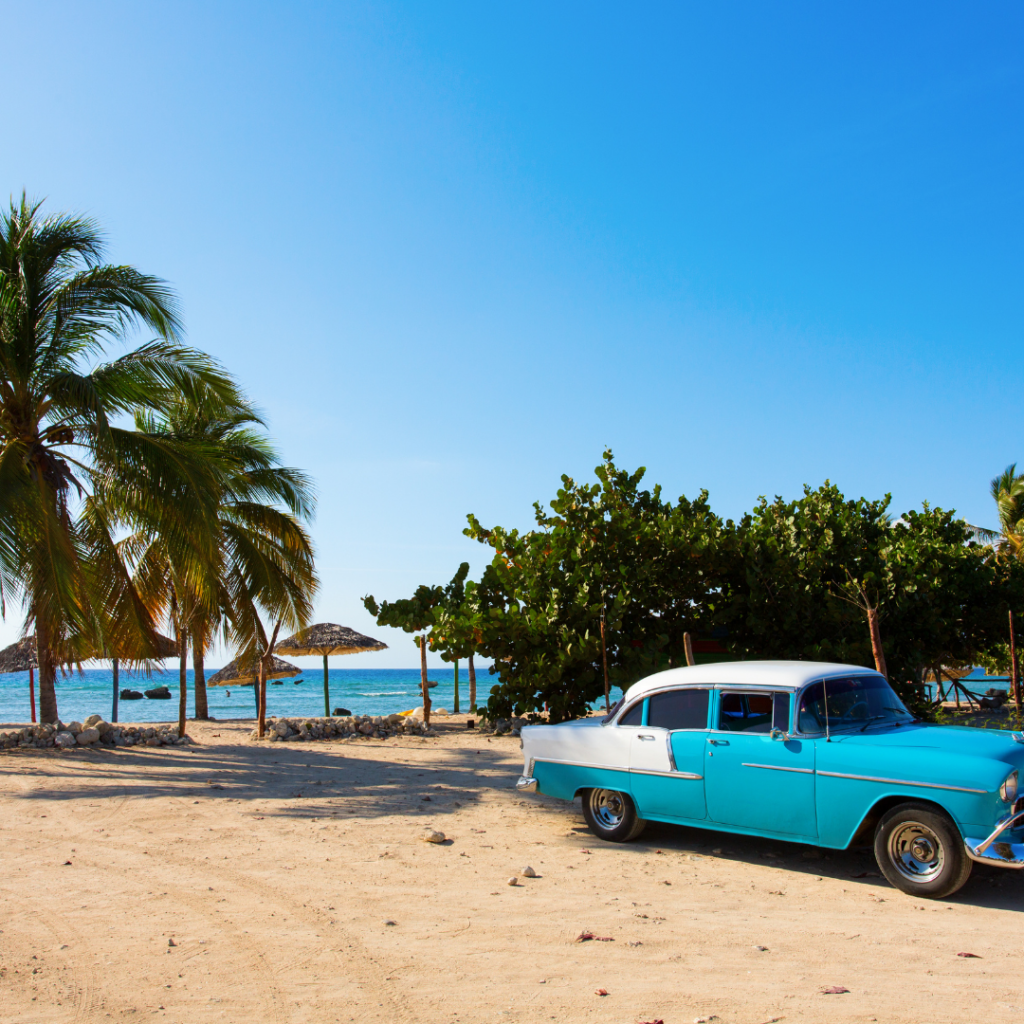
Experiences / Activities
This is where the fun comes in! There is SO much to do in Cuba, and it can easily be done on a budget. You can also book everything before you arrive. That way it’s already paid for, so you don’t have to worry about running out of cash.
In Havana the absolute essentials are:
- classic car tour, approx $30 per hour per car, I recommend a full tour of 2 hours;
- walking tour of the Old Town (with a local guide), approx $20 per person
- salsa class, approx $20 pp per hour;
- cocktail making class, approx $30 pp.
In Viñales – check out my family’s tour of their tobacco farm here. You get a huge amount of food (and rum!) included, as well as a free hand-made cigar and half a day in the valleys of Viñales. It’s a once in a life time experience with everything included, so great if you’re on a budget.
If you’re limited on time and can only manage a day trip to Viñales, I still 100% recommend. You just need to pay for the transport ($130 USD/EUR total round trip per car) and then book the AirBnB Experience, or a private tobacco experience if you prefer (you get more flexibility).
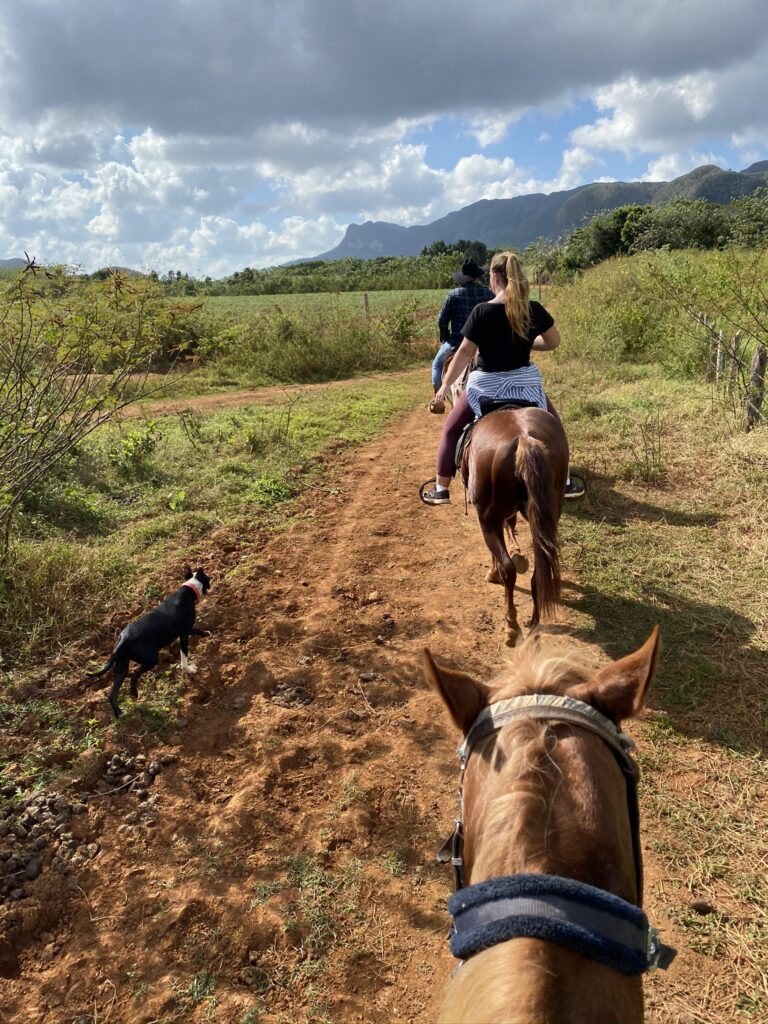
Shopping / Souvenirs
Cuba is a very unique shopping destination.
In Viñales, plan to take home some cigars (from the farms please, not the government owned stores!), some rum, and some local coffee and honey.
In Havana there are some really great independent shopping experiences that I’ve written about here.
In Trinidad, you can’t leave without perusing the local markets and picking up some pottery. Get your ‘canchanchara’ glasses here (a local Cuban cocktail that originated in Trinidad) and your tiny cute coffee cups. There is so so much art here, too, so schedule in a morning of exploring the cobbled streets, supporting the local artists, and treating yourself to some memories.
Unexpected Expenses
As with any travels, you will always encounter some unexpected costs. This could be tipping in restaurants/guides (which you should always do). This could also be losing money, getting scammed, having too many mojitos and buying all the drinks, you get the picture.
I always travel with a secret stash of 100USD or so, and leave it in my suitcase. You never know what’s going to happen, and in a country like Cuba where you might not be able to take out more cash from the ATM, you certainly don’t want to get caught short.
Don’t forget to factor in the taxi back to the airport, and take some extra USD for an overpriced sandwich in the terminal.
So, a total budget per day?
Well, if you’ve read all of the above, you’ll realise it’s not a straight forward country. It also entirely depends on how extra you’re feeling, whether you want to hit all the hotspots in Havana or not, and whether you want the luxury of a private car to take you around or you’re happy to slum it.
If you’re somewhere in the middle, I’d suggest budgeting $100 per day as an average (not including your accommodation).
Final thoughts
Cuba isn’t as cheap as many people think. It can be done cheaply, but it won’t be as easy. If you’re a hardy backpacker who likes a challenge, it’s perfect for you. If you’re looking for a seamless stress-free holiday, you’ll need to come with cash.
Did you find this post interesting or useful? I’d love for you to support me and share it.
Pin and save this blog post for later
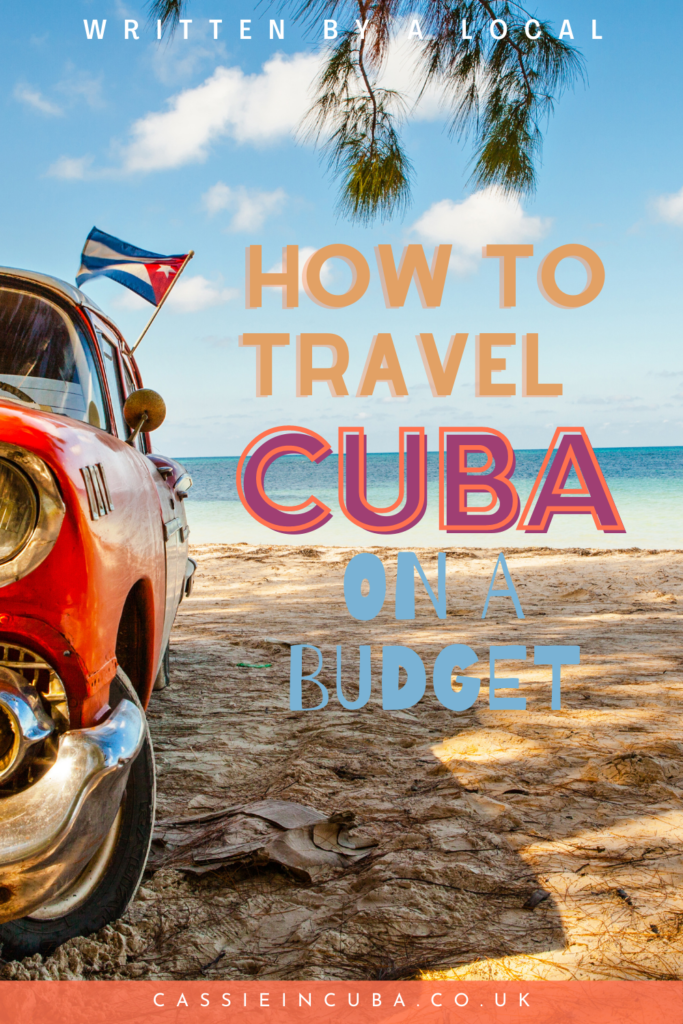
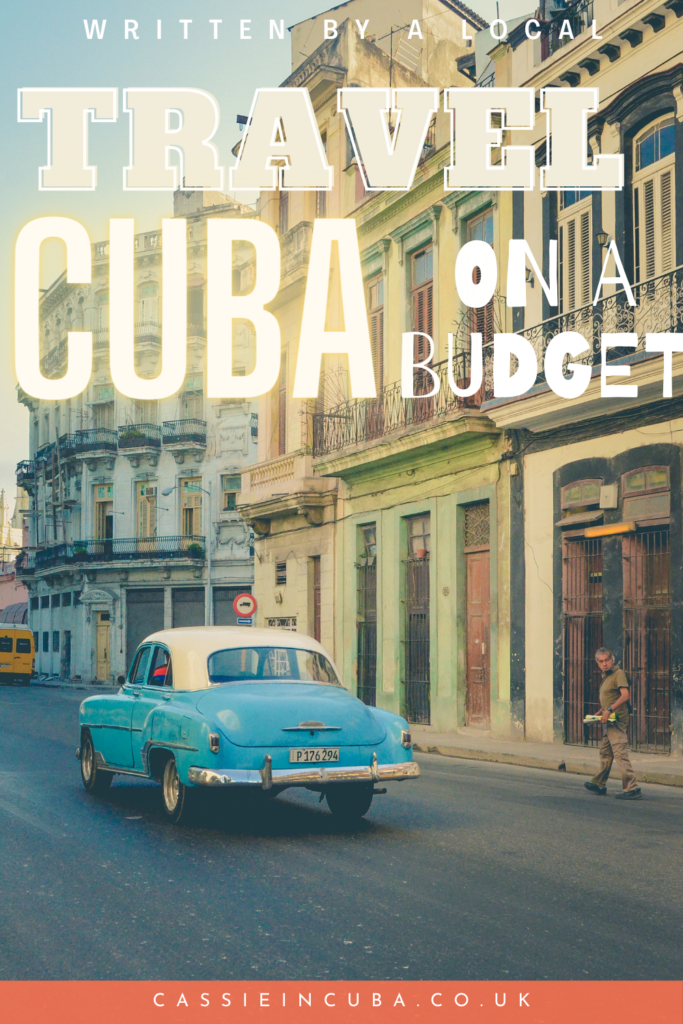
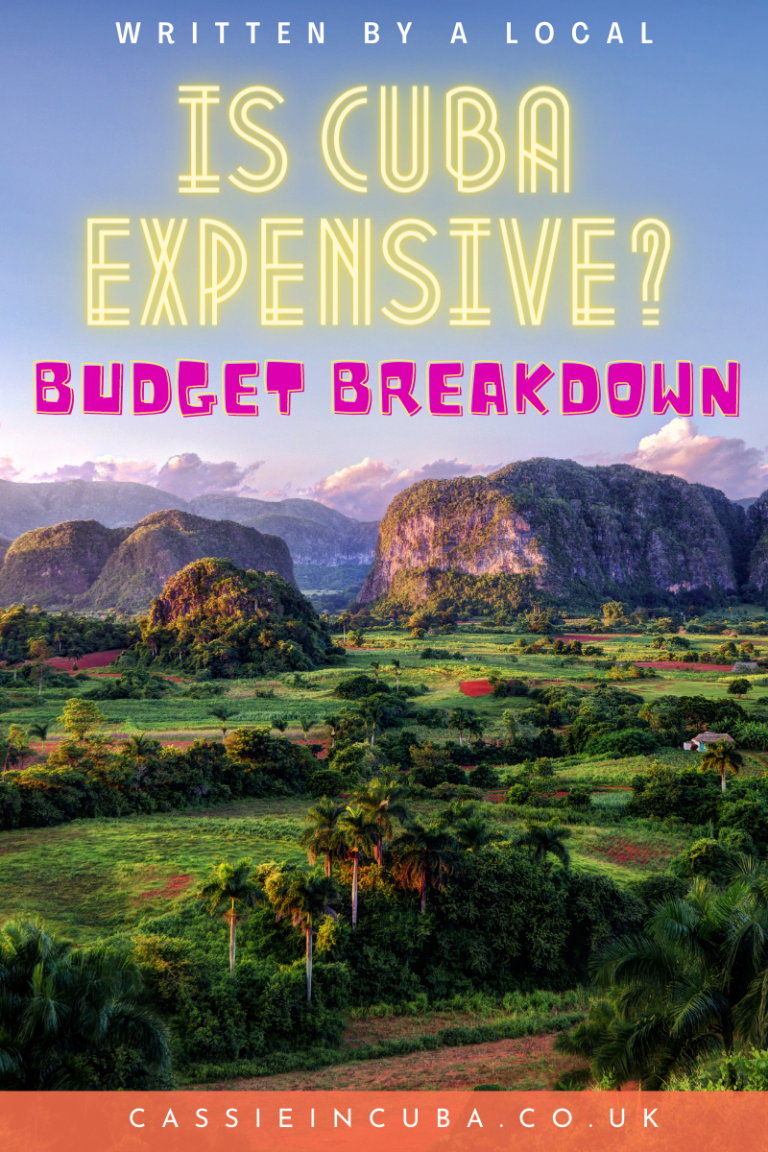


You May Also Like

How To Travel Cuba Responsibly (2024 update)
June 3, 2024
Internet in Cuba: 5 apps to download before you go
October 17, 2024